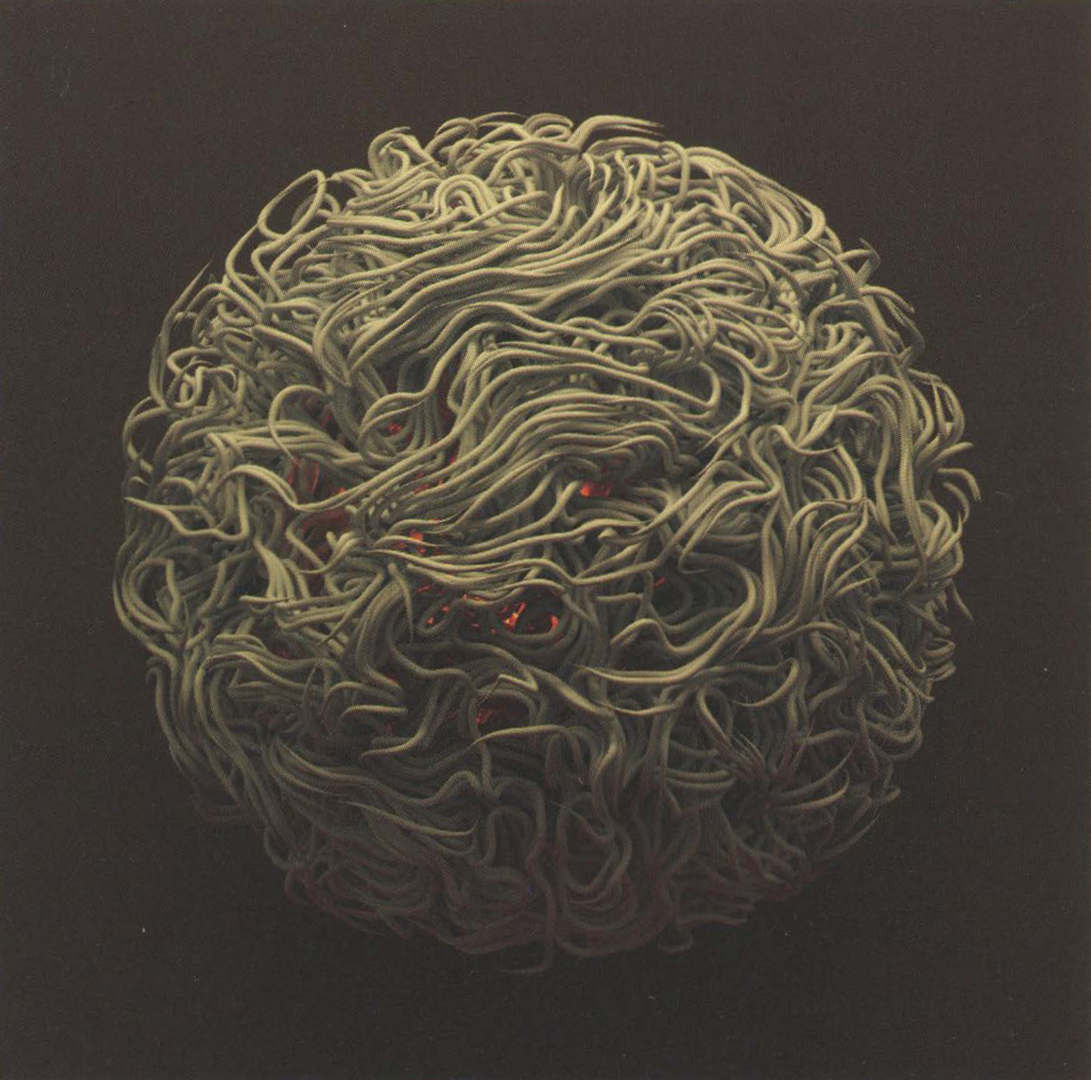Mark J Stock: Dynamo
Artist(s):
Title:
- Dynamo
Exhibition:
Creation Year:
- 2007
Medium:
- Lightjet digital print
Size:
- 30 inches x 30 inches x 1 inch
Category:
Artist Statement:
What attributes come to mind when you think of a tree, a mountain, a river, a cloud, or the sun? It is likely that your thoughts are the same as those of your ancestors, or of cultures living beyond the reach of modern technology. The shapes of natural things such as these compose a language of symbols that is less reliant on cultural context than the written or spoken word. We recognize these shapes because we are immersed in a world that obeys physical laws, each of which manifests in predictable ways, and in doing so recreates familiar objects and patterns. The applicability of physical law to every place humans have lived makes these experiences common, allowing the symbolic language to bridge culture and geography. One of my goals for Dynamo was to use computational science to depict a dynamism that is pervasive and uncontrollable yet confined. The research code that created the shapes in Dynamo works very much like a flocking algorithm, in which every particle is constantly affected by every other particle, though with physically motivated interaction rules. The combined action of magnetism, temperature, and convection (which, conveniently, are all amenable to the same computational methods) creates within the sun the dynamo effect. These intertwined forces result in amazingly complex fluid behavior. This image pays homage to the chaotic and powerful mass of hydrogen and helium at the center of our solar system that has historically provided enough predictability and mystery to both soothe and stimulate humankind’s desire for knowledge.
Technical Information:
Digital technology was integral to every aspect of production of Dynamo. Once the idea was created, but before any geometry
was defined, a detailed computational fluid-dynamics simulation was run. This calculation involved tracking the evolution of vortex particles within a closed spherical volume according to the rules of fluid dynamics. After the simulation parameters were iteratively refined and the flowfield was initialized, a subprogram processed the locations and strengths of all of the vortex particles, and
traced curves through space according to the same rules that moved the vortexes. Once the proper environment was designed
and lighting fixtures set, the entire scene was passed to the rendering software. The full-size image was created with Radiance, one of the few scientifically validated lighting simulators. Radiance uses a hybrid radiosity algorithm to closely approximate the actual physical light transport and inter-reflection throughout the complex scene. Radiance numerically followed hundreds of billions of light rays in
order to create the image. The resulting high-dynamic-range image was print-optimized and exported to a Lightjet printer, which exposes photographic paper with laser light at a resolution of several thousand pixels per inch.





